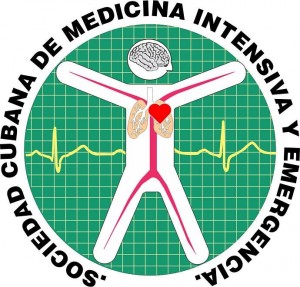Referencias ultrasonográficas estáticas para la cateterización de vena yugular interna en pacientes graves / Ultrasonographic static references for the internal jugular vein catheterization in critically ill patients
Palabras clave:
Cateterización de venas profundas, Ecógrafo, Paciente críticamente enfermo / Deep vein catheterization, Ultrasound, Critically ill patientsResumen
Introducción: la cateterización de venas profundas es uno de los procederes más frecuentes realizados en unidades de atención a pacientes graves. La ultrasonografía en tiempo real se ha convertido en la técnica de elección para la cateterización de vena yugular interna (VYI). La canalización por referentes anatómicos es una técnica a ciegas. La técnica ultrasonografía estática pudiera representar un método intermedio por requerir menos entrenamiento y aportar mayor beneficio que la técnica clásica por referentes anatómicos.
Objetivos: presentar un grupo de experiencias básicas relacionadas con referencias ultrasonográficas con la utilización de un ecógrafo en su modalidad estática para la cateterización de VYI en una serie de casos.
Método: se presentan datos de referencias ultrasonográficas de diez pacientes graves ingresados en el Servicio de Medicina Intensiva del Centro de Investigaciones Médico Quirúrgicas entre los meses de octubre de 2015 – 2016. Se compara con la literatura.
Resultados: la relación anatómica VYI – Arteria Carótida Interna (ACI) que predominó en el lado derecho fue la posición lateral (60 %) de VYI con respecto a ACI. En la VYI izquierda predominó la posición antero lateral (40 %). La VYI de mayor diámetro fue la derecha (80 %).
Conclusiones: existe una gran variabilidad anatómica de la relación VYI – ACI que justifica la utilización de la ultrasonografía para la cateterización de VYI. En unidades sin ecógrafo se recomienda seleccionar el lado derecho en primera opción y no realizar más de tres intentos de canalización.
ABSTRACT
Introduction: deep vein catheterization is one of the most frequent procedures performed in intensive care units for critically ill patients. Real-time ultrasonography has become the technique of choice for internal jugular vein (IJV) catheterization. The channeling by anatomical referents is a blind technique. The static ultrasonography technique could represent an intermediate because of it requires less training and provides greater benefit than the classical anatomical reference.
Objectives:to present a group of basic experiences related with ultrasonography references by the use of an ultrasound in its static modality for the catheterization of IJV in a series of cases.
Method: It is presented data of ultrasonography references of ten critically ill patients admitted at Intensive Care Unit of the Surgery and Clinic Research Center, Havana Cuba, from October 2015 to October 2016. The results were compared with the literature.
Results: the anatomic relationship between IJV-Internal Carotid Artery (ICA) which predominated on the right side was the lateral position (60%) of IJV respect to ICA. In the left IJV anterior and lateral position (40%) predominated. The largest diameter of IJV was the right side (80%).
Conclusions: there is a great anatomical variability of the IJV-ICA ratio which justifies the use of ultrasonography for IJV catheterization. In units without ultrasound it is recommended to select the right side in the first option and do not make more than three channeling attempts.
Descargas
Citas
1. Kilbourne MJ, Bochichio GV, Scalea T, Xiao Y. Avoiding common technical errors in subclavian central venous catheter placement. J Am CollSurg 2009; 208(1): 104-109
2. Grupo de Investigadores Proyecto Disminución de la Infección Nosocomial en Unidades de Cuidados Intensivos. Incidencia de infección relacionada con el cuidado sanitario en unidades de cuidados intensivos en Cuba (año 2014). Resultados de la implementación de un paquete de medidas profilácticas. InvestMedicoquir[revista en la Internet]. 2015 julio-diciembre [citado 2016Noviembre 04];7(2):182-202. Disponible en: http://www.revcimeq.sld.cu/index.php/imq/article/view/319
3. Cruz JC, Sánchez JM, Barrero L, López J. Cateterización venosa profunda en el adulto: vena yugular interna vs vena subclavia. Estudio comparativo. RevCubMedIntEmerg[revista en la Internet]. 2004[citado 2016Noviembre 04];3(4) 55-72. Disponible en:http://bvs.sld.cu/revistas/mie/vol3_4_04/mie06404.htm
4. Parienti JJ, Mongardon N, Mégarbane B, Mira JP, Kalfon P, Gros A, et al. Intravascular Complications of Central Venous Catheterization by Insertion Site. N Engl J Med. 2015 Sep 24;373(13):1220-9
5. Ullman JI, Stoelting RK.Internal jugular vein location with the ultrasound Doppler blood flow detector.AnesthAnalg. 1978 Jan-Feb;57(1):118.
6. Bond DM, Champion LK, Nolan R. Real-time ultrasound imaging aids jugular venipuncture. AnesthAnalg. 1989 May;68(5):700-1
7. Troianos CA, Hartman GS, Glas KE, Skubas NJ, Eberhardt RT, Walker JD, et al. Guidelines for performing ultrasound guided vascular cannulation: recommendations of the American Society of Echocardiography and the Society Of Cardiovascular Anesthesiologists. AnesthAnalg. 2012 Jan;114(1):46-72
8. Abdo A. Cateterización de vena yugular interna guiada por ultrasonido. Hallado en: http://blogs.sld.cu/aaabdo/2015/10/26/cateterizacion-de-vena-yugular-interna-guiada-por-ultrasonido/. Acceso el 04 de noviembre de 2016.
9. Umaña M, García A, Bustamante L, Castillo JL, Sebastián Martínez J. Variations in the anatomical relationship between the common carotid artery and the internal jugular vein: an ultrasonographic study. Colomb Med (Cali). 2015 Jun 30;46(2):54-9
10. Bacallao RA, Ávila A, Salgado J, Gutiérrez F, Guerra G, Llerena B. Variabilidad anatómica de la vena yugular interna por ecografía en voluntarios sanos y pacientes en hemodiálisis. Revista Cubana de Medicina [revista en la Internet]. 2015[citado 2016Noviembre 04]; 54(3): 190-201. Disponible en:http://bvs.sld.cu/revistas/med/vol54_3_15/med02315.htm
11. Gordon AC, Saliken JC, Johns D, Owen R, Gray R. US-guidedpuncture of the internal jugular vein: complications and anatomicconsiderations. J VascIntervRadiol 1998; 9:333-8
12. Ray BR, Mohan VK, Kashyap L, Shende D, Darlong VM, Pandey RK. Internal jugular vein cannulation: A comparison of three techniques. J AnaesthesiolClinPharmacol 2013; 29:367-71.
13. Dietrich CF, Horn R, Morf S, Chiorean L, Dong Y, Cui XW, et al. Ultrasound-guided central vascular interventions, comments on the European Federation of Societies for Ultrasound in Medicine and Biology guidelines on interventional ultrasound. J ThoracDis. 2016 Sep;8(9):E851-E868
14. Álvarez F. Accesos venosos centrales guiados por ultrasonido: ¿Existe evidencia suficiente para justificar su uso de rutina? RevMedClin Condes 2011; 22(3) 361-368
15. Giordano CR, Murtagh KR, Mills J, Deitte LA, Rice MJ, Tighe PJ. Locating the optimal internal jugular target site for central venous line placement. J ClinAnesth. 2016 Sep; 33:198-202
16. Díaz-Águila HR, Valdés-Suarez O. Ecografía de rastreo. ¿Complementario o evaluación clínica? Rev Cub Med Int Emerg [revista en la Internet]. 2016 [citado 2016 Noviembre 04];Vol.15;(4). Disponible en: http://www.revmie.sld.cu/index.php/mie/article/view/182/0







